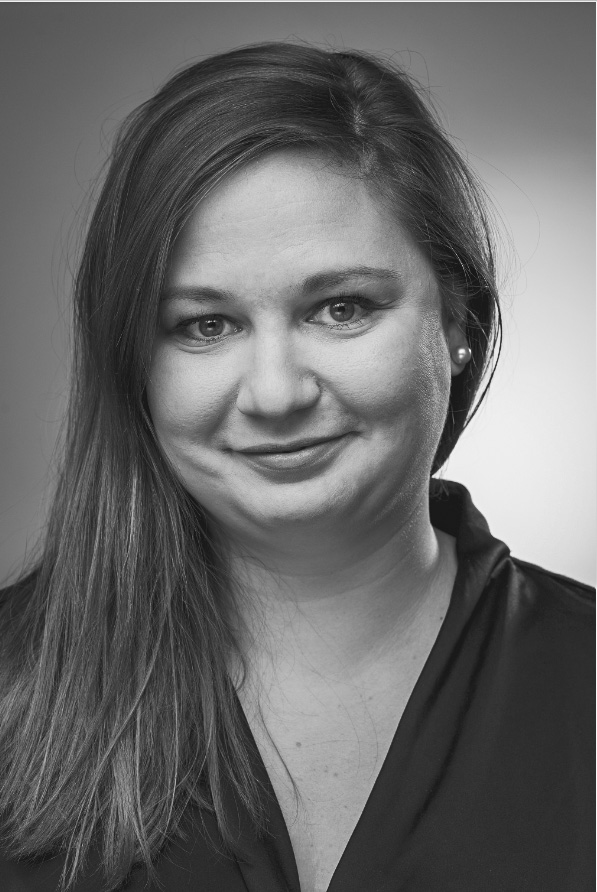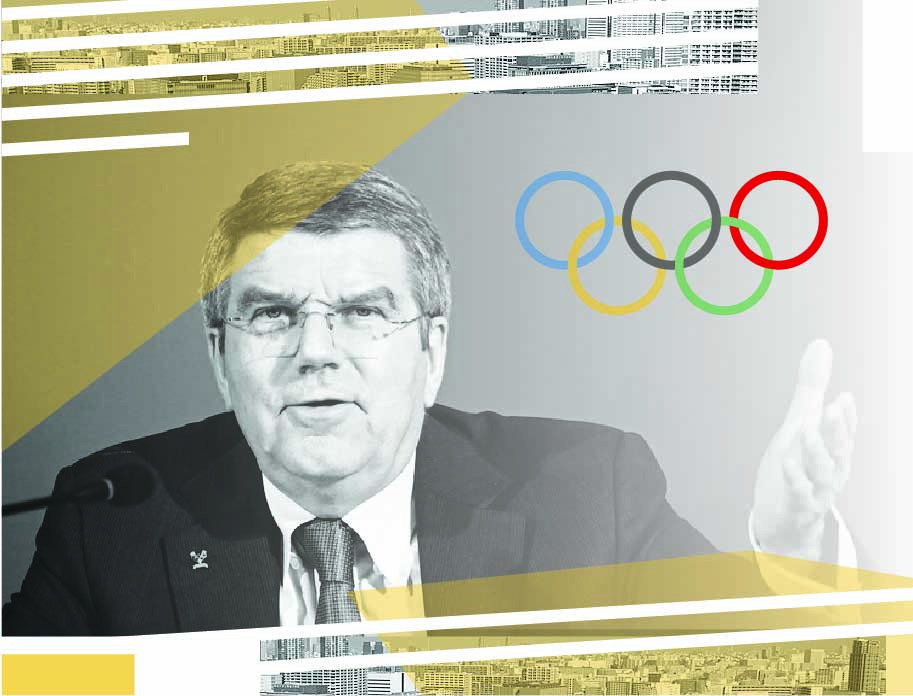
Dr Veronika Macková
Academic researcher at The Faculty of Social Sciences, Charles University. Her research interests include sports journalism, media coverage of athletes with a disability and journalism of artificial intelligence. Since 2008 she has been working as a sports reporter in Czech Television.

Section 2: Media Coverage & Representation
- Twitter conversations on Indian female athletes in Tokyo
- ”Unity in Diversity” – The varying media representations of female Olympic athletes
- The Olympic Channel: insights on its distinctive role in Tokyo 2020
- How do we truly interpret the Tokyo Olympic ratings?
- Between sexualization and de-sexualization: the representation of female athletes in Tokyo 2020
- Reshaping the Olympics media coverage through innovation
- An Olympic utopia: separating politics and sport. Primary notes after analyzing the opening ceremony media coverage of mainstream Spanish sport newspapers
- What place is this? Tokyo’s made-for-television Olympics
- The paradox of the parade of nations: A South Korean network’s coverage of the opening ceremony at the 2020 Tokyo Olympics
- Tokyo 2021: the TV Olympics
- Why we need to see the “ugly” in women’s sports
- “The gender-equal games” vs “The IOC is failing black women”: narratives of progress and failure of the 2020 Tokyo Olympics
- Ghana: Poor local organizing, and absence of football team dampens interest
- Megan Rapinoe: The scary Bear for many Americans?
- ‘A Games like no other’: The demise of FTA live Olympic sport?
- Temporality of emotionalizing athletes
- Fandom and digital media during the Tokyo 2020 Olympic Games: A Brazilian perspective using @TimeBrasil Twitter data
- Media wins medal for coverage of athletes as people, instead of entertainers
- Media frames and the ‘humanity’ of athletes
- Reporting at a distance. Stricter working conditions and demands on sports journalists during the Olympics
- New Olympic sports: the mediatization of action sports through the Olympic Games 2020 Tokyo
- Simone Biles, journalistic authority, and the ideology of sports news
- Representations of gender in the live broadcast of the Tokyo Olympics
- Americans on ideological left more engaged in Summer Olympics
- Nigeria: Olympic Games a mystery for rural dwellers in Lagos
- National hierarchy in Israeli Olympic discourses
- Equestrian sports in media through hundred Olympic years. A roundtrip from focus to shade and back again?
- Reshaping the superhuman to the super ordinary: The Tokyo Paralympics in Australian broadcasting media
- Is the Paralympic Games a second-class event?
- The fleeting nature of an Olympic meme: Virality and IOC TV rights
- Tokyo 2020: A look through the screen of Brazilian television
- Is the Paralympic Games a second-class event?
- How digital content creators are shaping meanings about world class para-athletes
- How digital content creators are shaping meanings about world class para-athletes
- The male and female sports journalists divide on the Twittersphere during Tokyo 2020
- Super heroes among us: A brief discussion of using the superhero genre to promote Paralympic Games and athletes
- Representing high performance: Brazilian sports journalists and mass communication professionals discuss their philosophies on producing progressive Paralympic coverage
- Representations of gender in media coverage of the Tokyo 2020 Paralympic Games
The Paralympic Games provide an important opportunity to influence public opinion on athletes with a disability. The International Paralympic Committee seeks to raise public awareness of athletes with a disability. Their aim is to help the public to see the sports of the disabled as more than just a therapeutic tool, but as elite sport. However, the Paralympic Games are often the only way for athletes with a disability to enter news channels around the world.
The Tokyo Paralympic Games differed from previous games. Due to the COVID-19 pandemic, the event was postponed for a year, and spectators could not be at the venue. The media played a more important role than ever before because only they brought athletes with a disability to the attention of audiences around the world. In Tokyo 2020, 800 foreign journalists and photographers reported directly from the venue, in addition to the 500 local journalists and photographers, and over 1,600 journalists related to broadcasting. Many more did not come to Japan at all due to strict measures against coronavirus. A journalist from the Czech Republic told me: “I’ve been to two previous Paralympic Games, but I didn’t dare to fly to Tokyo this year. Everything seemed very complicated, and I think it would make it very difficult for me to do a good job.”
I was one of those journalists who covered the 2020 Paralympics from Tokyo, for Czech national media, and also conducted a number of interviews with international journalists in Tokyo. Journalists (regardless of coronavirus vaccination) had to undergo repeated PCR testing, were only allowed to move around sports venues in specific zones, had to keep a two-meter distance from athletes in the mixed zones, and were not allowed to walk the city for 14 days. They were confined to the hotel, the Media Press Centre or individual sports venues. A Spanish television producer regretted the absence of social contact: “For me, it is so hard because I have to come to Tokyo for the Olympic Games, and then I stayed 14 days in quarantine, and then returned home. And when I arrive to Tokyo, again, I have to spend another 14 days in quarantine.”
A press journalist from Slovakia told me: “In addition to traditional security measures, health care has been added, and this combination of security and health sterility is killing for journalists.” A French journalist who wrote for the French Paralympic Committee talked about some of the required measures that did not make much sense: “It is a little bit weird actually because we cannot talk to athletes and be close to them, we cannot go inside the stadium, so I don’t think these are very good measures.”
However, most journalists got used to the new work habits very quickly, such as a journalist from Switzerland who told me: “We can’t meet the athletes, do some shots. In the beginning, I found it crazy, but now I think that’s okay, and it works anyway.”
How we report about athletes with a disability is changing, but their life stories remain
Dave Arthur described the inequality between Olympians and Paralympians, which he explains by the attractiveness of a sporting event, team, competition, or individual from a commercial perspective. The situation changed significantly before the Paralympic Games in London in 2012, mainly due to media coverage, sponsorship, and media campaigns. The British Paralympic Committee, for example, have published a media guide that describes how to communicate athletes with a disability, what terminology to use, or how to relate an athlete’s life story. Paralympic sport is becoming more professional, and journalists are changing the style of their articles and reports. The life stories of athletes with a disability no longer predominate, instead journalists focus on performance. The press officer for Team USA told me: “I think they are athletes first and, you know, obviously people first as well, but they should be covered the same way as other professional athletes.” In some countries, the whole strategy and presentation of some national teams is changing: “Actually, in France, we have the approach that we want to put the Paralympics and Olympics at the same level and give to the athletes with a disability more visibility than they had before.”
A Spanish television producer highlighted that the audience’s perception has changed, whilst the viewers are paying more attention to athletes with a disability than in previous years. A journalist from the UK also observed a greater journalist interest in Paralympic sport: “There is definitely more awareness about this sport in journalism now.”
She also sees the attitude of journalists towards the Paralympic athletes has changed: “I think there is more sensitivity now about not going and just asking people in particular if there is any traumatic reason behind the disability.” But the stories of what happened to athletes, how they came to their disability, how they overcame it, can educate the public on disability-related issues. A journalist from Iran revealed his motivation for writing such stories: “I put life stories into the articles to inspire other people with a disability.” A Japanese journalist explains why he writes about the life stories. “I think it is important, and people want to know why they have a disability or why they do not have legs.”
Despite the recent changes, the media coverage of Paralympic sports is going to stay clinched between the reporting about athletes as professionals and the life stories easily accessible to general audiences.

